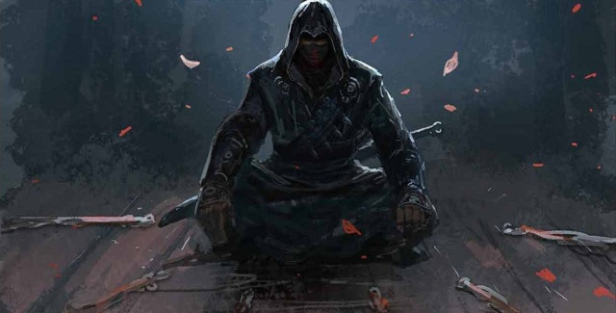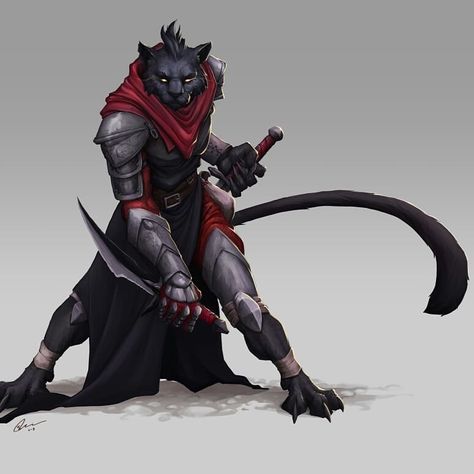
I’m still thinking on the name, but I already like this better than the last one. Like the last entry I am going to use this series to explore more about multi-classing options in 5th Edition Dungeons and Dragons and why certain combinations work so well together. Specifically this week we’re going to look at the Rogue’s Assassin archetype from the Player’s Handbook multi-classed with the Bard’s College of Whispers option from Xanathar’s Guide to Everything.
First things first, this multi-class combination really only relies on two attributes to do the heavy lifting – Dexterity and Charisma. This is where your spell effectiveness comes in as a Bard and determines how many times you can use your Bardic Inspiration before requiring a rest. Dexterity is going to be your main combat stat, providing you a bonus to Armor Class as well as your attack and damage rolls with finesse weapons. Get them both as high as you can to start. If you can’t make them equal, I would take a higher Charisma to start and then even them out down the road with ability score increases. You’re not going to miss an extra point of attack bonus and damage as you are a use of an already limited use ability or save DCs for your limited spell slots.
This class combination is quite potent at throwing out burst damage. Both the Rogue’s Sneak Attack and the College of Whisper’s Psychic Blades ability allow you to throw out extra dice of damage in certain situations. Sneak Attack, for those not in the know allows a Rogue to deal extra damage dice if they strike an opponent with certain weapon types as long as they have advantage on the attack or have an ally that is also next to the target. Psychic Blades on the other hand is a limited use ability that allows the character to expend a use of Bardic Inspiration after hitting with a weapon attack to deal additional psychic damage to the target. Both of these extra damage sources scale with the classes’ respective levels. To take a look at it in action, lets imagine we have a Rogue 3/Bard 3 with a Dexterity of 16, a Charisma of 16, wielding a rapier. Once per round he can hit a target for 1d8+3 plus 2d6 piercing damage and 2d6 psychic damage, provided he meets the Sneak Attack requirements. Now, he can only do this three times per day before he is out of Bardic Inspiration (but stay tuned), but this puts him just ahead of the curve on a pure Rogue’s Sneak Attack dice at the same level. Furthermore, if he can get surprise on the opponent, his Assassinate ability automatically turns this attack into a critical hit. As usual, all of the damage dice get doubled in this situation.

This pairing of abilities also provides the character with some versatility. Can’t get advantage on an attack roll but need to squeeze some extra damage out? You can still trigger Psychic Blades with a successful attack. And since you don’t have to use it until after you hit with the attack, you’re not at risk of wasting it should the attack miss. It’s also a different type of damage, so if you’re stuck fighting something with resistance to your weapon’s damage, you can still trigger the psychic damage in order to cut through it. The only drawback is that you can only use Psychic Blades a number of times equal to your Charisma modifier before requiring a long rest. It’s also “burstier” in its scaling than Sneak Attack, making higher jumps in damage dice less often.
The College of Whispers has an ability at Bard level 6 that is just dripping with flavor for this class combination – Mantle of Whispers. When a humanoid creature within 30 feet of you dies, you can capture its shadow. This allows you to then become that creature for one hour. This includes all general knowledge that a casual acquaintance would know about that person. Need to infiltrate a guarded manor to get at a target? Kill a servant or chambermaid while they’re running an errand in the city and then walk right in to the manor (and up to your target) with the guards being none the wiser. Assassinate your target, find a hiding place, and then drop the disguise. Exfiltrate the manor while the guards are busy looking for a traitorous servant.
The other benefit of this class combination is that you can get up to four instances of Expertise, allowing you to double your proficiency bonus on eight different skills (or seven skills and thieves’ tools), making you an absolute power house in those areas.
Honestly, you could do much worse than a 10/10 split of this combination over a full 20 levels. It nets you five ability score increases, all four instances of Expertise, Uncanny Dodge, Evasion, and Font of Inspiration. Font of Inspiration deserves special mention because it is HUGE for this build. Gained at Bard level 5, you now get back all of your spent Bardic Inspiration after taking a short rest, letting you use Psychic Blades more often. This level split also nets you a full 10d6 of bonus damage between Sneak Attack and Psychic Blades, which is the same that you would get on Sneak Attack alone from a pure Rogue build. Finally, you get access to 5th level Bard spells and below which include some incredible options for a manipulative character.
However, there’s also a lot to be said for a Rogue 12/Bard 8 split. You gain a die of Sneak Attack damage, but lose two dice from your Psychic Blades. You also only get access to up to 4th level spells. Finally you lose the Bard’s second instance of Expertise. However, you get several great trade-offs – First off, you net yourself a sixth ability score increase. You also get access to the Rogue’s 11th level Reliable Talent ability. This ability ensures that you will never roll below a 10 on ability checks that allow you to add your proficiency bonus. With as many skills as you’re proficient in that are going be pumped even higher thanks to Expertise, you can reliably hit higher those higher DCs in a number of areas.
Spell choice is key for the Bard, since they only get know a certain number of spells. However, there are some great options for a manipulative character – animal friendship and charm person can let you get past any creature you can’t charm with your silver tongue. Unseen servant has some great uses as far as being able to open doors and windows from a distance. As you get higher in level you can learn invisibility and greater invisibility, hold person, and more powerful illusion spells such as major image and hallucinatory terrain. At 5th level spells, you can get access to modify memory, which has all sorts of uses for this build.
Looking at options for feats, Alert is a must take for it’s massive +5 bonus to Initiative checks. The assassin shines when it gets the drop on opponents, so acting first in combat is important. It also ensures you’re not going to fall prey to some of your own tricks regarding hidden characters. Actor has a lot of potential if you do a lot with disguises, and why wouldn’t you with this build? Finally, Skulker deserves at least a mention, letting you stay hidden should your ranged ambush fail and giving you more options to sneak away should you need to.
Finally, there are a lot of great options for race when you’re building this character. There are any number that give bonuses to either of the combo’s main stats, but only one that provides a bonus to both – the Tabaxi from Volo’s Guide to Monsters. This race option also gives your character automatic proficiency in Perception and Stealth, a climbing speed of 20 feet, darkvision, and the ability to double your speed when moving. The advantages of these abilities for this kind of character build should be pretty self-explanatory. Being a cat-person does limit your natural disguise ability somewhat, but you also have access to a number of magical ways to pull off more outlandish disguises.
